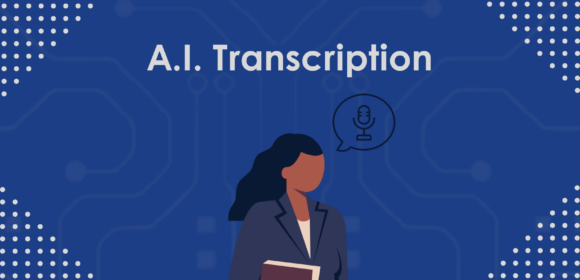At the start of 2020, a discussion on the transformative potential of Artificial Intelligence (A.I.) came to the forefront of many peoples’ minds, leaving those to ponder how it might affect pop culture, professional circles, etc. In the time since then, A.I. has progressed exponentially, and the discussion has evolved from theoretical implication to practical implementation.
And one of the primary fields that many people have looked to for the influence of A.I. is the field of Transcription. In a legal setting, a transcript is a written record of spoken word with its sources ranging from court hearings to depositions to client meetings. The process typically involves a professional transcriptionist, who is specifically trained to accurately reproduce words, phrases, and conversations spoken aloud in legal settings that have been recorded.
This presents the first pro of Artificial Transcription: A.I. can is an easily accessible and affordable option when transcribing as it eliminates the need for hiring and/or contracting a transcriptionist. Though this advantage is tempting, it also comes with its drawbacks.
A.I. has made significant strides in language-processing and is still growing exponentially as you’re reading this article. But it’s not perfect.
With Artificial Transcription, one doesn’t receive the same level of accuracy in the software’s output as one would with a professional transcriptionist. Many A.I. tools have reported an 86% accuracy rate, according to Statista.com, but in a field such as law, which is built upon the precision of language, lawyers will want their documentation to be as accurate as possible to any proceedings, court hearings, etc.
In a scenario where an A.I. Transcription tool makes significant mistakes, legal documents will require additional reviews from live people, who can discern voices, accents, jargon, etc. (language that A.I. struggles with). These additional reviews can become time-consuming.
With this in mind, it’s important to consider a healthy balance: recognize the uses of A.I., such as efficiency and bulk transcription, but be sure to moderate it with human-based processing and review.





